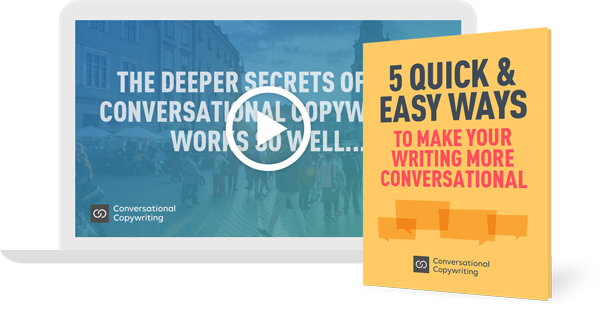
Take off your marketing hat for a moment.
Think of your experiences as a regular consumer, buying stuff for yourself and your family.
Would it be fair to say that you’d be unlikely to buy from a company you don’t trust?
Doesn’t sound like something you’d feel comfortable doing, right?
OK, now put your marketing hat back on, and answer me this, “How hard do you work to earn and hold onto the trust of your prospects and customers?”
If you tell me that the trust of those people is super-important to you, excuse me while I go through all your marketing materials.
Because everything you do as a marketer either builds trust or burns it. Nothing is neutral.
When your business delivers a great customer service experience, you’re building trust.
But when that experience is not so good, you’re burning trust.
When you send out an email or newsletter that is chock full of useful information, you’re building trust.
But when you send three hard-charging promotional emails in a day, each getting louder and more insistent in its tone, you’re burning trust.
The same thing plays out across your entire website, and on all your social media channels.
Every step you take either builds trust or burns it.
With all that in mind, consider your sales copy…
Each business has to find the right balance for its sales copy.
You want your copy to be persuasive, but not too pushy.
You don’t want to leave money on the table by not being persuasive enough. But nor do you want to lose the trust of your prospects and customers by pushing too hard.
This is a tough balance to find.
It can be incredibly tempting to push too hard, simply because it’s a quick way to increase sales this month or this quarter.
The downside, of course, it that while it looks like you’re winning in the short term, you’re almost always losing in the long term.
If you’re having trouble visualizing what “losing in the long term” actually looks like, consider email marketing.
Whether you know it or not or like it or not, your email marketing practises are being judged at multiple levels.
If you push too hard, more of your subscribers will unsubscribe, mark your emails as spam or, worst of all, complain about you to their ISP.
At the same time, your ISP is independently judging you, based on the frequency of your emails, their deliverability, the number of unsubscribes, complaints and so on. As do the various gateways between your ISP and the ISPs of your subscribers.
In other words, both your subscribers and multiple ISPs are all evaluating your reputation as a marketer, and are trying to figure out how trustworthy you are.
The worse your reputation, the lower the deliverability of your email campaigns in the future.
So yes, pushing too hard means you lose in the long term.
And that’s just with your email.
Why the conversational approach wins every time…
Conversational copywriting is unique in that it’s rarely seen as being pushy or untrustworthy, but it’s still incredibly persuasive.
It allows you to deliver a very persuasive message, without triggering any warning bells.
It drives sales without burning trust.
In fact, it’s consistently building trust.
How can this be? How can conversational copywriting be so persuasive while at the same time making the reader feel safe?
Because there is nothing threatening or pushy about conversational copywriting.
You’re not writing or pushing AT your readers.
Instead you’re engaging WITH your readers.
If you have any doubts that a conversation can be persuasive, think back to when your partner or one of your kids persuaded you to change your mind about something.
That’s right… even short conversations can be powerfully persuasive.
And the conversational approach persuades without triggering the usual defenses people deploy when faced with a pushy sales pitch.
Your next step? Run an audit across all your site pages, emails, social media and ongoing promotional campaigns.
Wherever you find copy you think might be burning reputation instead of earning it… rewrite it in a more conversational style.
Conversational Copywriting is the future of selling online. You can build your expertise now, or try catching up later. Find out about the course here…
